Located in the Philippines, Sulu Sea, the Tubbataha Reef has became a protected marine park on August 11th, 1988.
This marine park, with an area of 968 km2 was added to the UNESCO World Heritage list in December 1993.
In Sama language, Tubbataha means “a long reef emerged at low tide.” Indeed, this reef is composed of two parts, and each part has a small island on its center. However, the islands are very small and located far from the coast (the reef is located 181km from Puerto Princesa, the nearest city port), which make them difficult to reach for fishermen and population. If you want to imagine the Tubbataha Reef, try to picture yourself two tiny islands of maximum 2 meters, in the middle of Sulu Sea
This isolation has allowed the Tubbataha reef to maintain a high level of biodiversity along an abundance of incredible life.
Underwater, it is possible to encounter more than one thousand different species of fish, from the tiny anthias to the gigantic whale shark. All of them floating beyond the incredible coral which is composing the seabed.
Location of the marine park of the Tubbataha reef
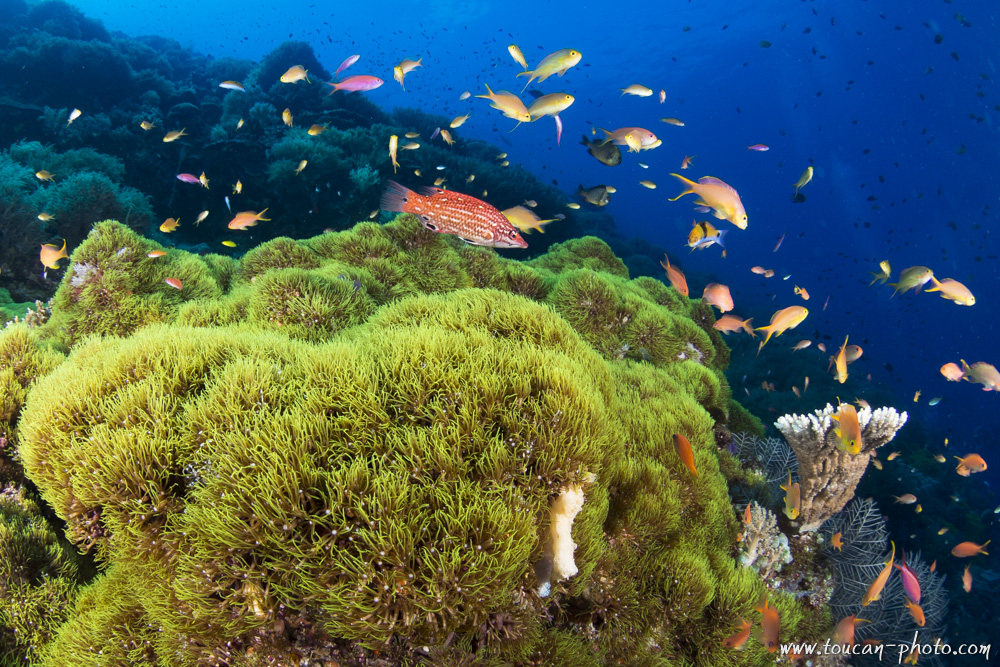 Juvenile Redfin hogfish (Bodianus dictynna) surrounded by Anthias
Juvenile Redfin hogfish (Bodianus dictynna) surrounded by Anthias
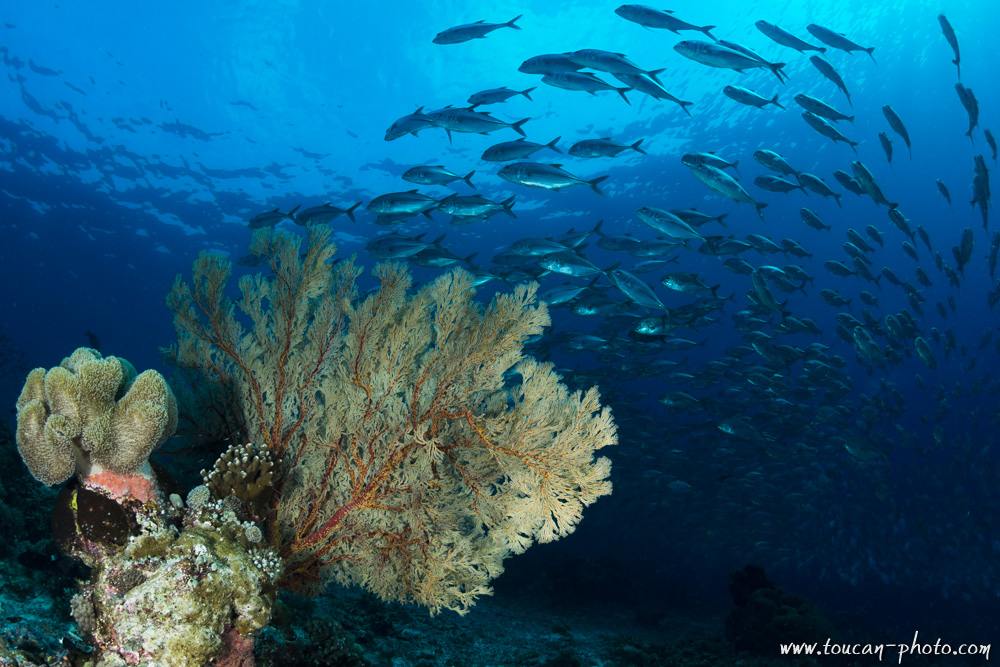 Schoof of Bigeye trevally (Caranx sexfasciatus) and Subergorgia sp coral
Schoof of Bigeye trevally (Caranx sexfasciatus) and Subergorgia sp coral
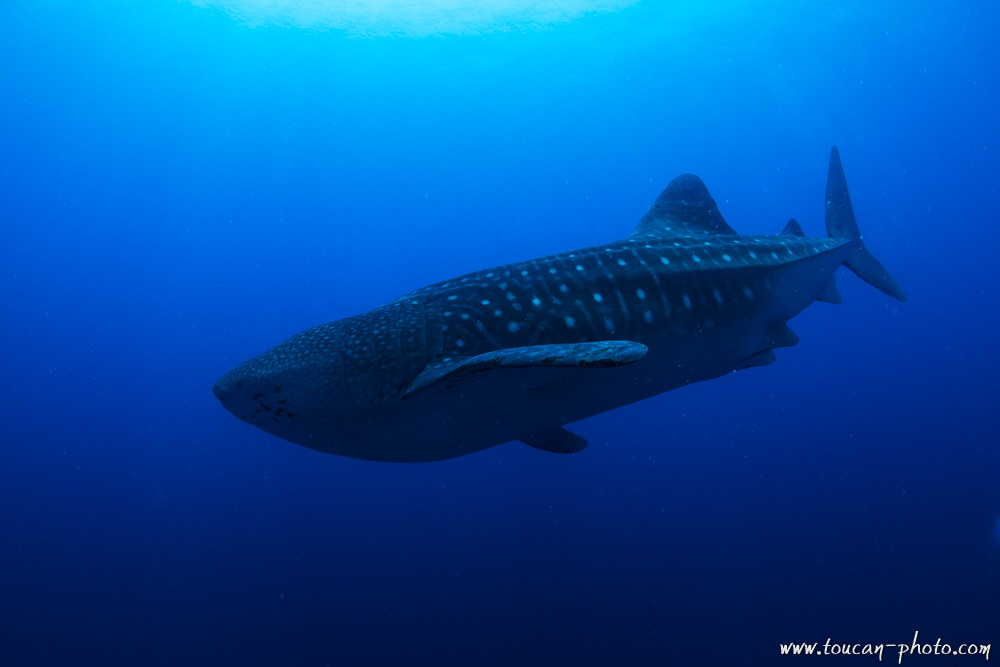 Whale Shark (Rhincodon typus)
Whale Shark (Rhincodon typus)
The whale shark, which may exceptionally reach 20 meters long for a mass about 34 tons, is considered as the largest fish currently living on Earth. According to scientists, a whale shark can live up to 100 or 150 years. Its diet consists only of plankton which makes it harmless to humans .
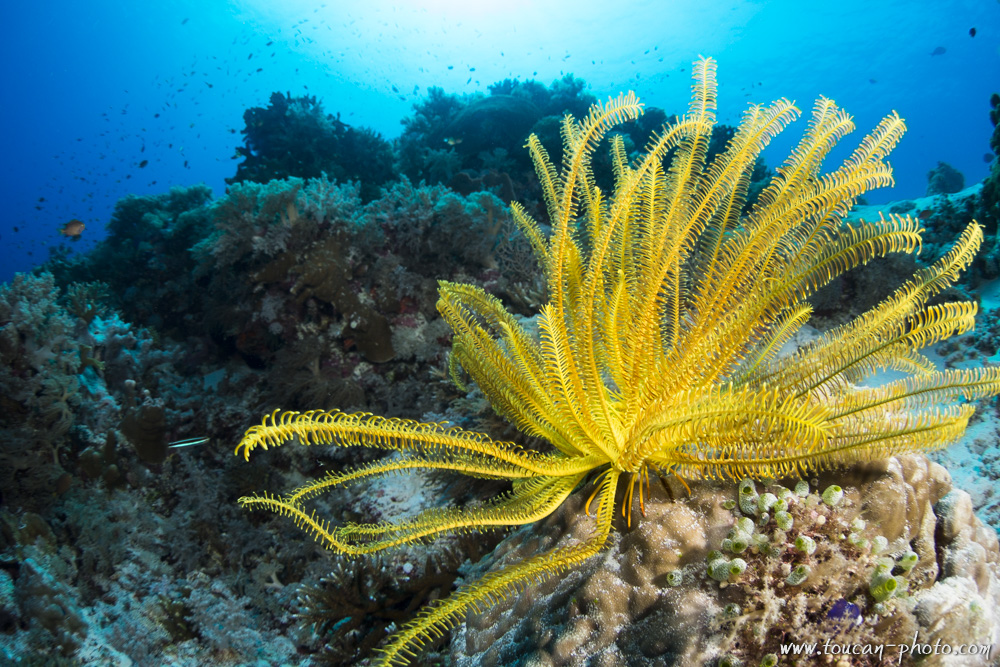 Yeallow feather star
Yeallow feather star
A feather star is an animal from the crinoid class, and has the particularity to be equipped with cirrhes (some kind of long articulated and claws fingers). These fingers allows it to crawl and cling to an object, like here on a coral. Some species can be relatively mobile (even live a pelagic life), but most of them are sedentary, and will not move unless they are forced to do so.
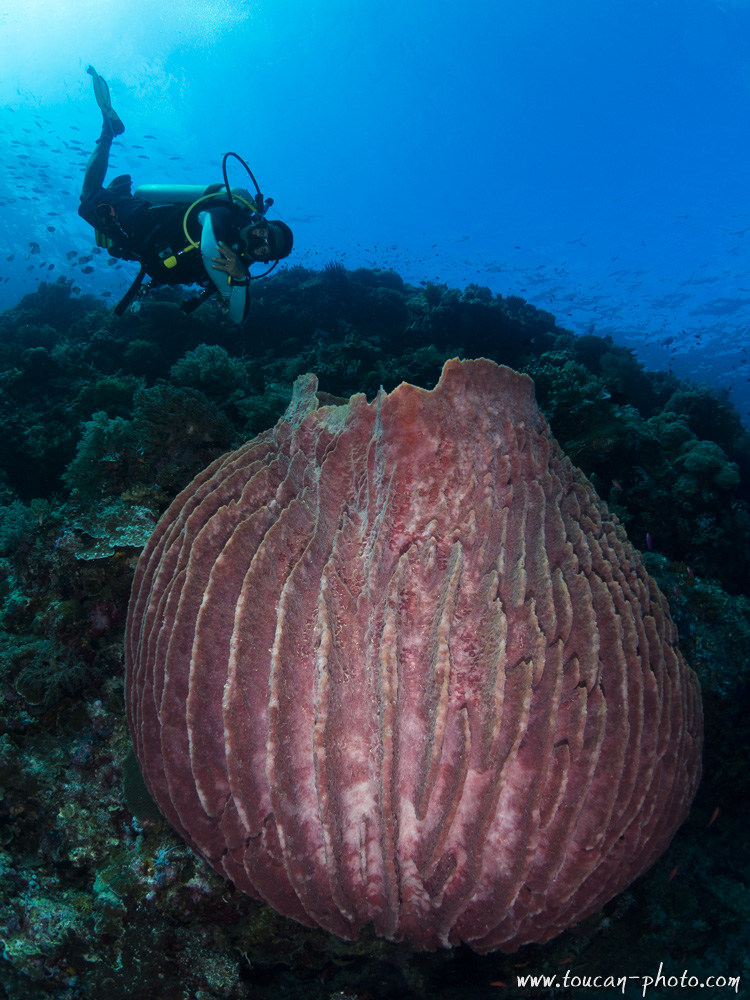 Barrel sponge (Xestospongia testudinaria)
Barrel sponge (Xestospongia testudinaria)
A barrel sponge can reach several meters in diameter. It is an animal (and not a vegetal) that feeds by filtrating the water. A huge barrel sponge like this one can filter up to 200 litre each day. This sponge can live many hundred years, even thousand years. A study on its cousin living in the Caribbean’s allows to identify one specimen which had more than 2300 years (this one is now dead) . And marine biologists have discovered in the Ross Sea , a deep bay of the Southern Ocean , some Scolymastra Joubini sponge 23000 years old.
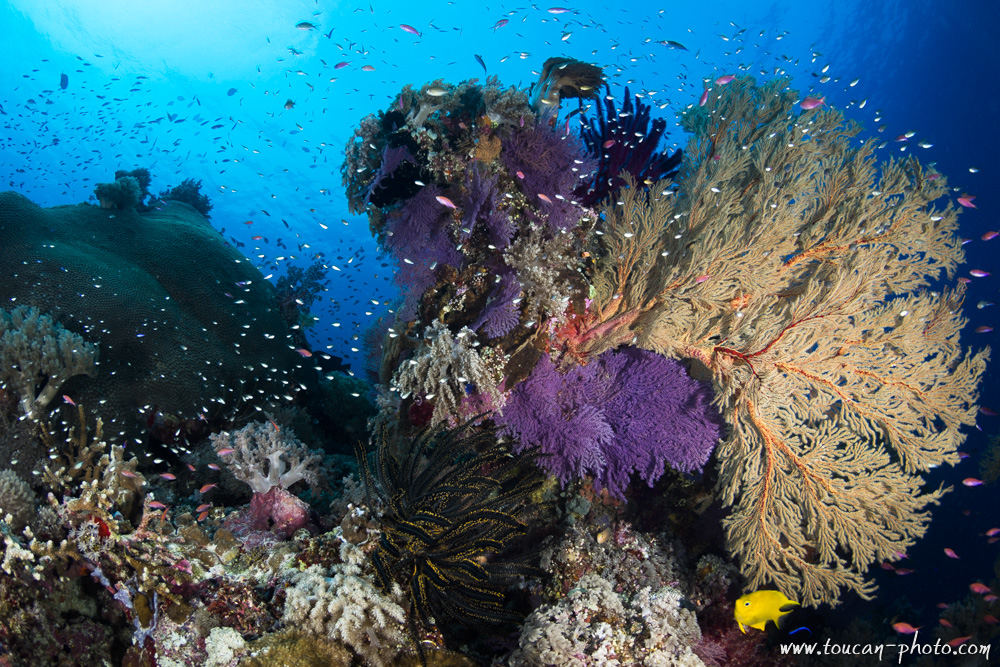 This assembly, made of several different species of corals is used as a shelter by numerous anthias and glass fish
This assembly, made of several different species of corals is used as a shelter by numerous anthias and glass fish
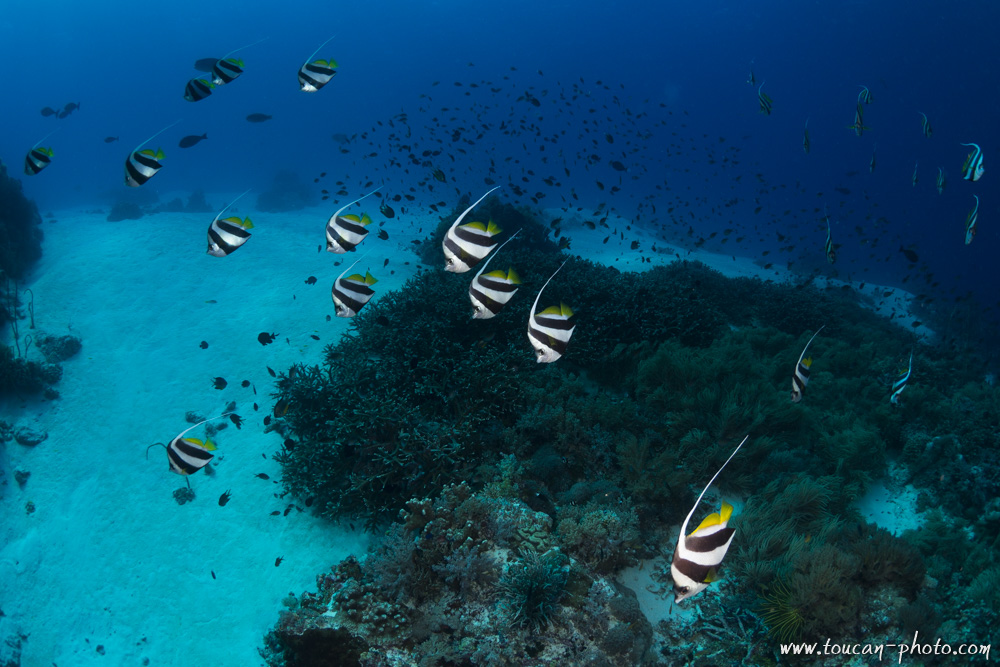 Longfin bannerfish (Heniochus acuminatus)
Longfin bannerfish (Heniochus acuminatus)
The Longfin bannerfish lives in couple and feeds on zooplankton in the water column. Juveniles are solitary and can feed by cleaning other fishes.
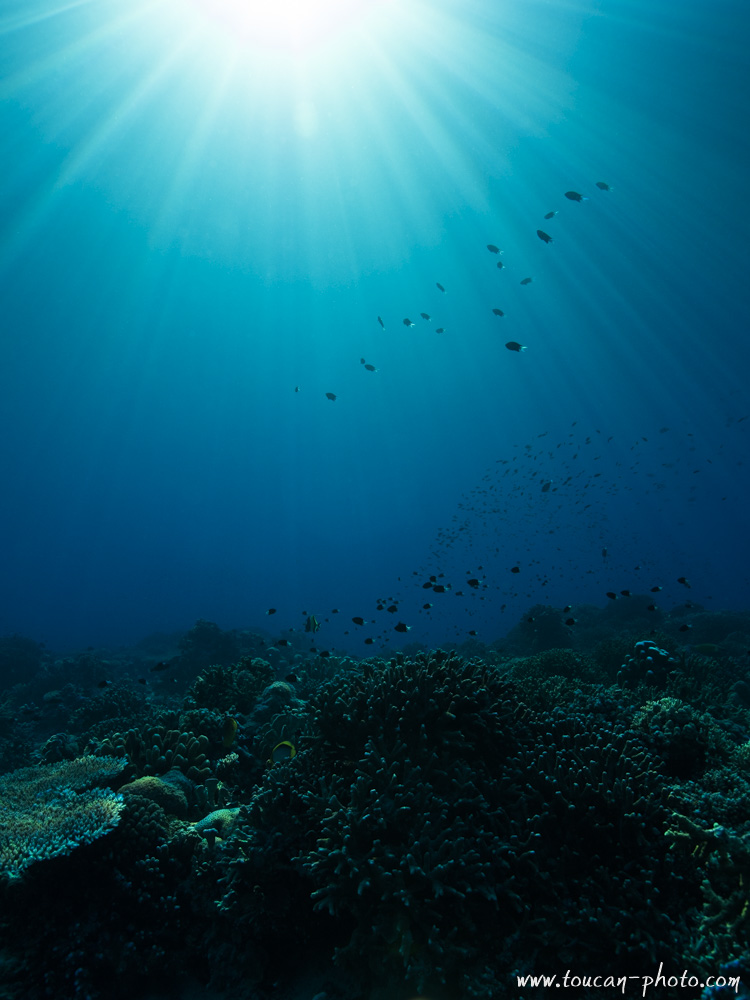 Coral garden
Coral garden
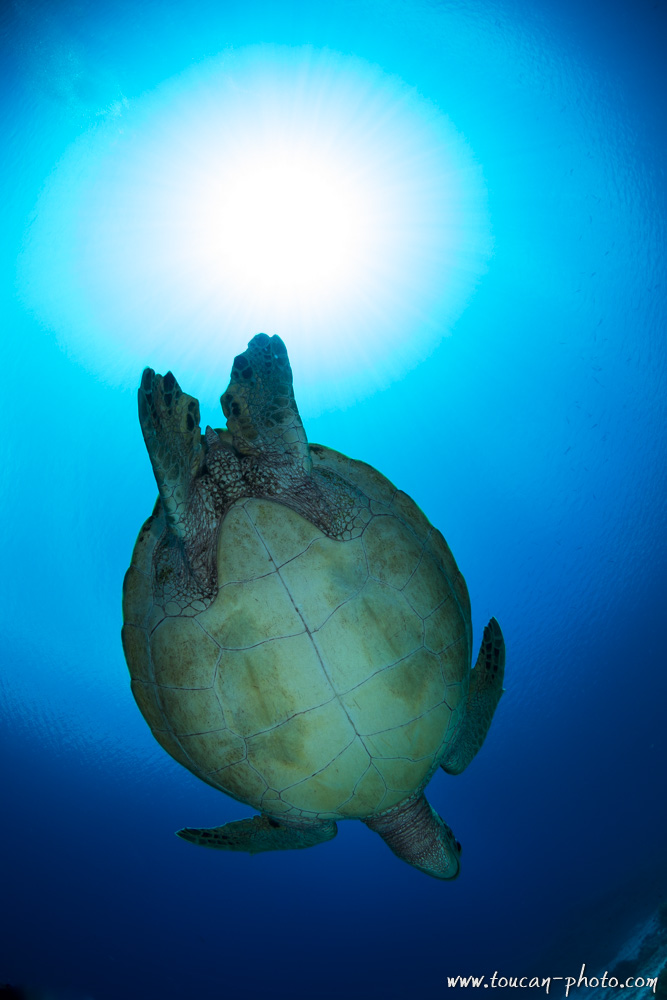 Green turtle (Chelonia mydas)
Green turtle (Chelonia mydas)
This sea turtle measures on average 110 cm and weight between 80 to 130 kg. Some specimens can reach 300 kg for a carapace length of 150 cm. This turtle lives in tropical waters of all oceans , but is more or less rare depending on the region . It’s the fastest turtle : it can reach a speed of nearly 35 km/h.
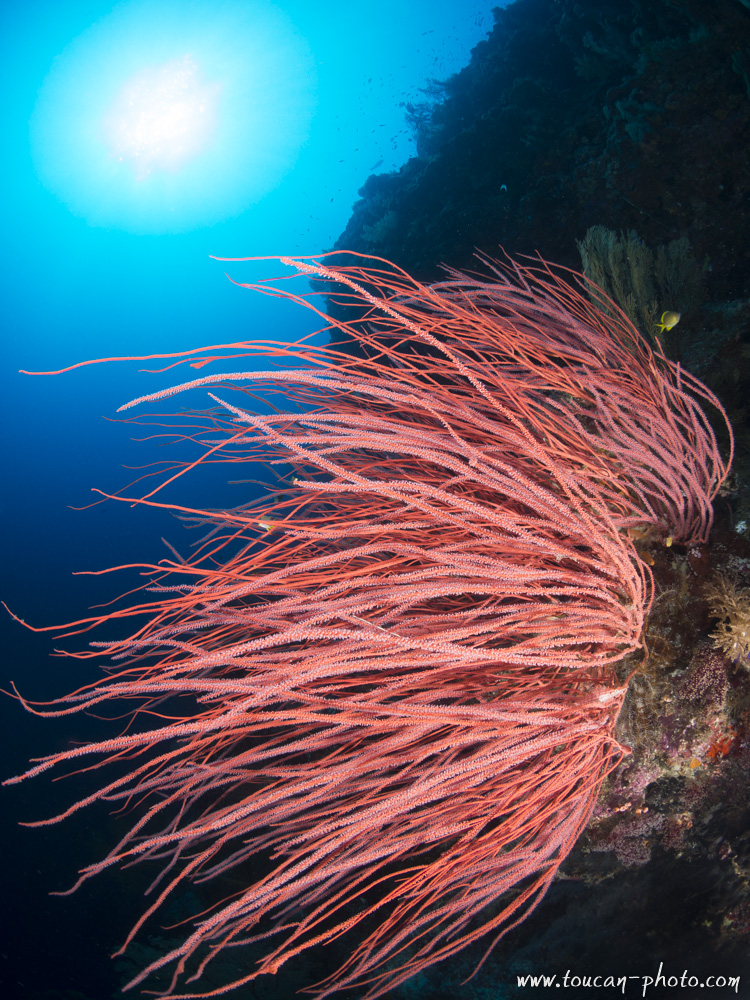 Coral
Coral
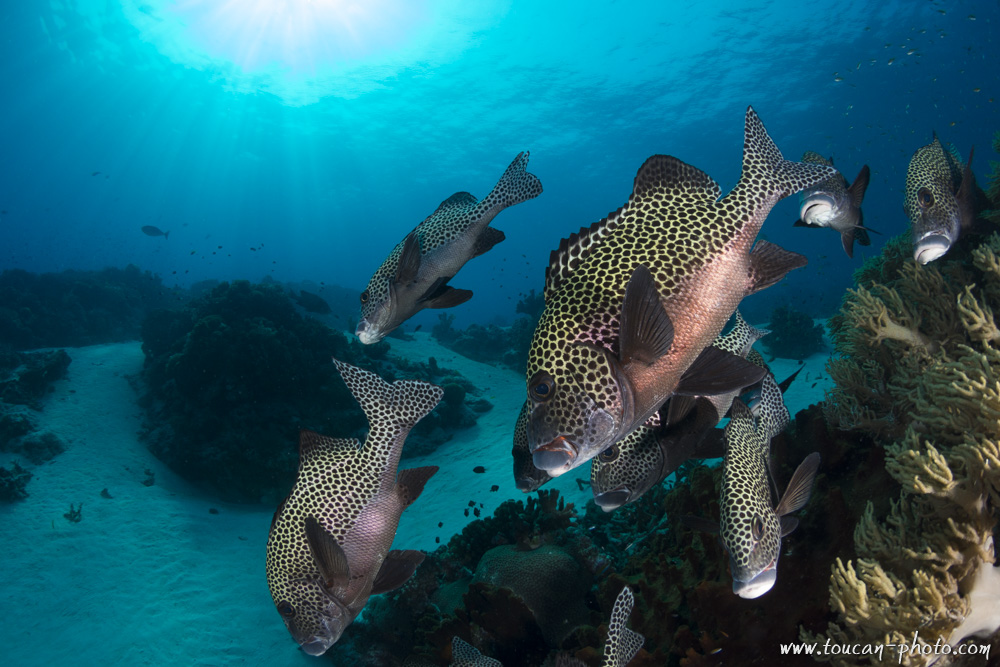 Group of Many-spotted sweetlips (Plectorhinchus chaetodonoides)
Group of Many-spotted sweetlips (Plectorhinchus chaetodonoides)
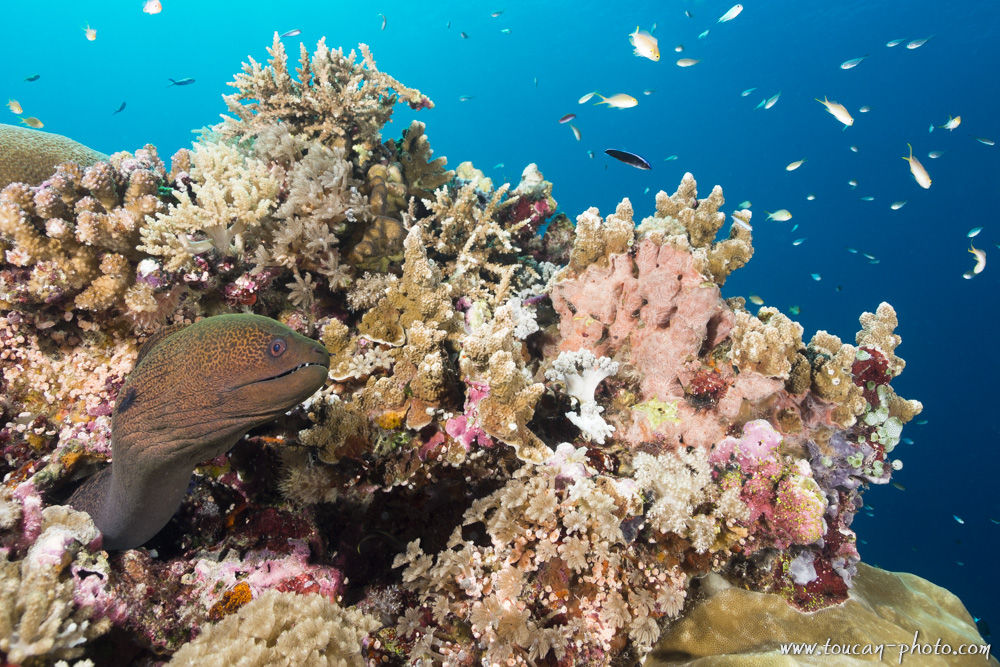 Giant moray (Gymnothorax javanicus)
Giant moray (Gymnothorax javanicus)
The Giant moray is a very long fish, that can reach 3 m (9.8 ft.) length for a weight of 30 kg (66 lb) . It is mainly carnivore, and waits until the night to go out its lair and hunt its preys, mainly fishes, but also sometimes shellfishes.
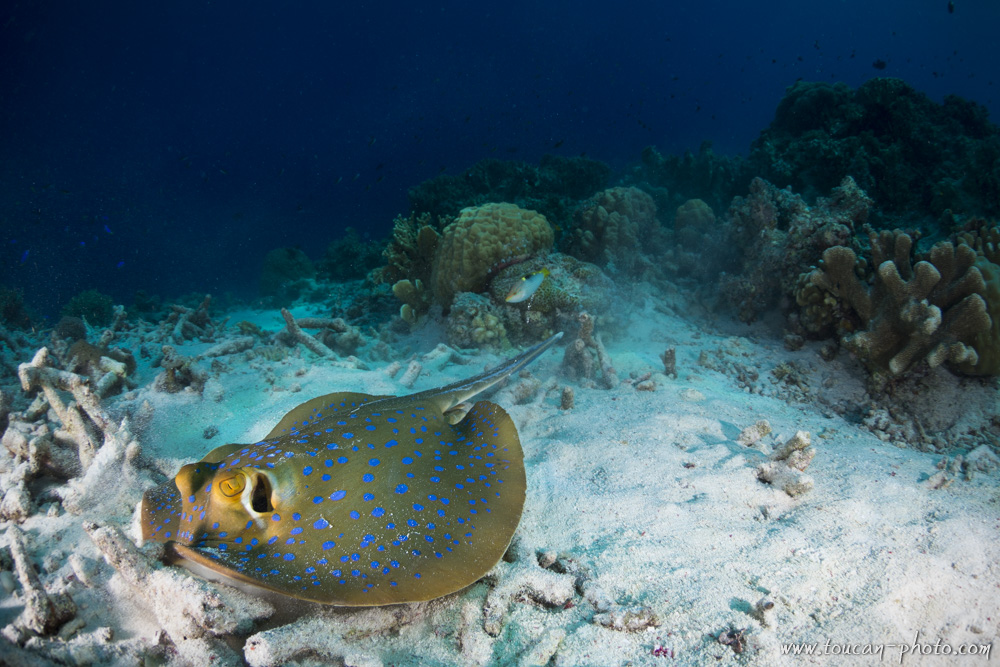 Blue-spotted ribbontail ray (Taeniura lymma)
Blue-spotted ribbontail ray (Taeniura lymma)
The blue-spotted ribbontail ray excavates sandy bottoms in search of molluscs, shellfishes like crabs, and small hidden fishes. When prey is located, the ray trapped it using its flat body and push it to his mouth by swaying its body.
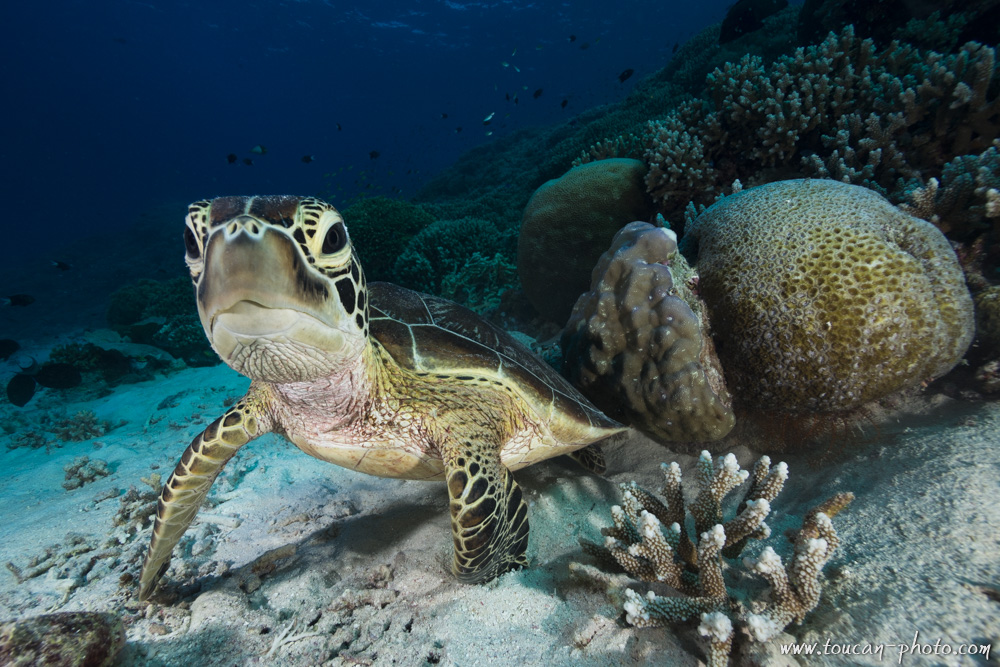 Green turtle (Chelonia mydas)
Green turtle (Chelonia mydas)
The diet of green turtles changes with age. Juveniles are carnivorous, they eat small invertebrates or fish eggs. When they get mature, the Green Turtles become exclusively herbivorous. This herbivore diet distinguished individuals of this species in danger of extinction , from all the other marine turtles.
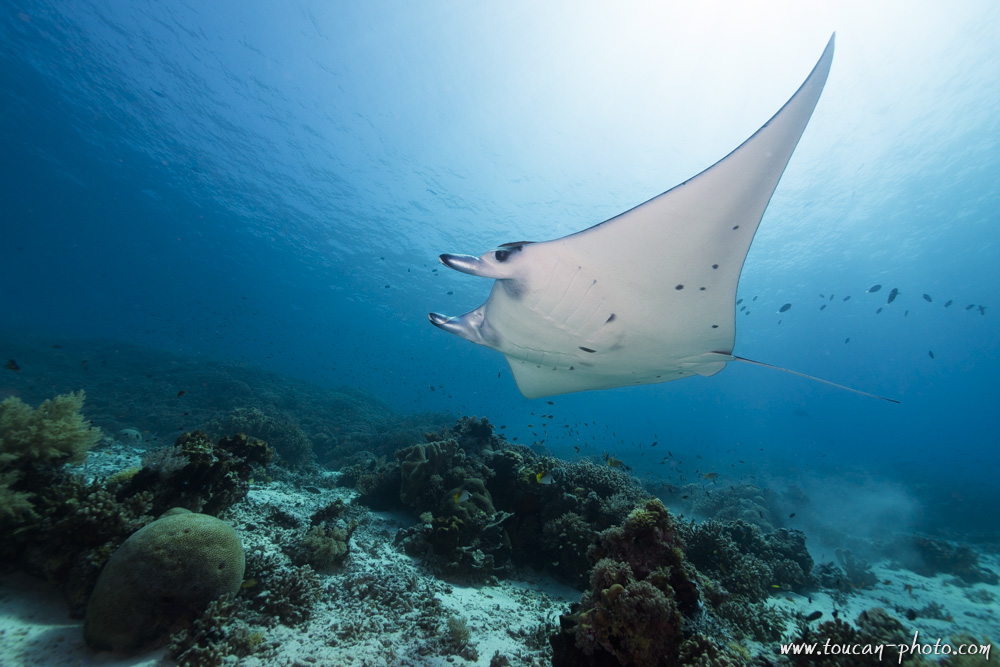 Devil ray (mobula sp)
Devil ray (mobula sp)
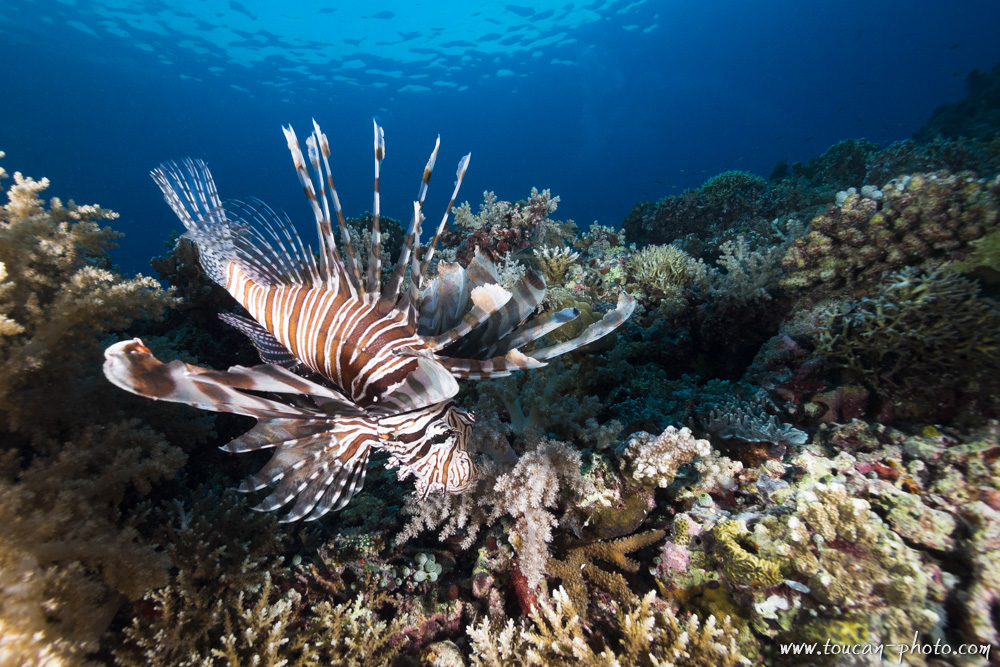 Red Lionfish (Pterois volitans)
Red Lionfish (Pterois volitans)
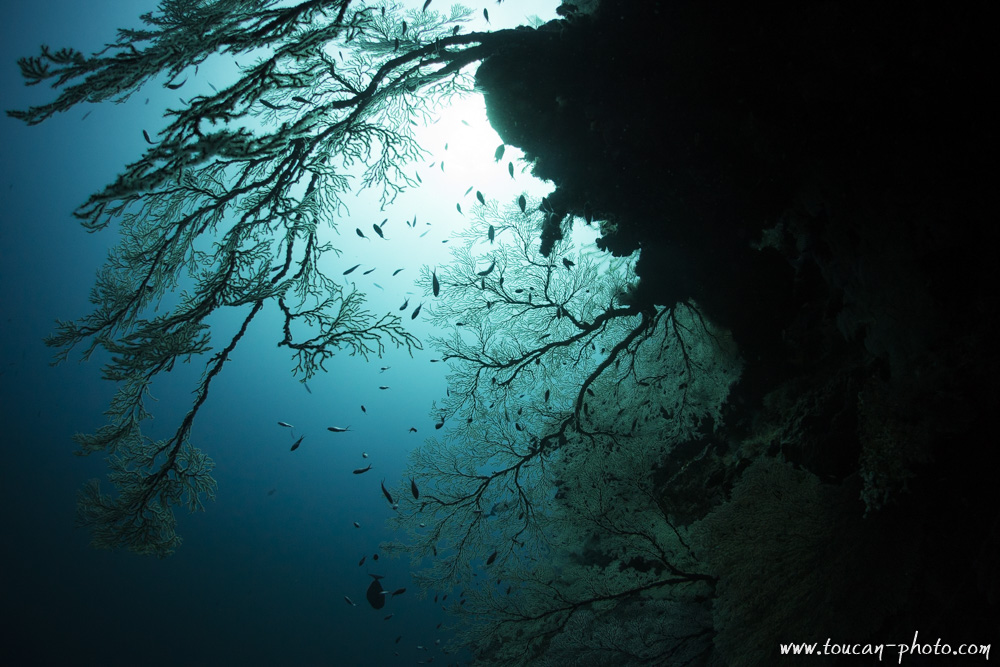 Corals
Corals
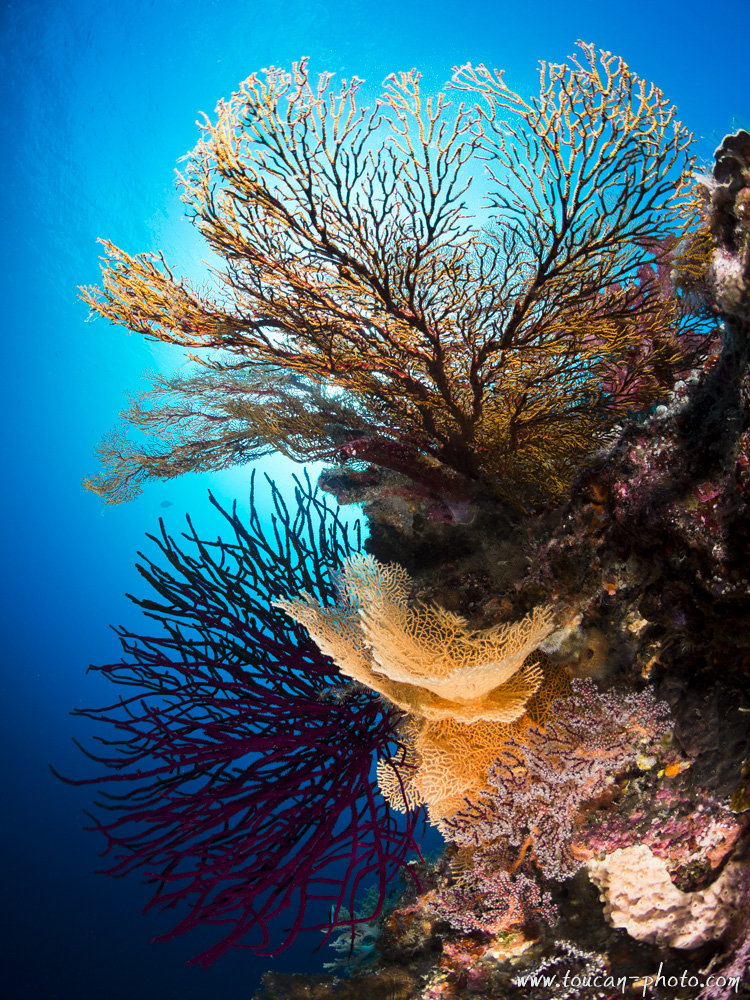 Corals assembly
Corals assembly
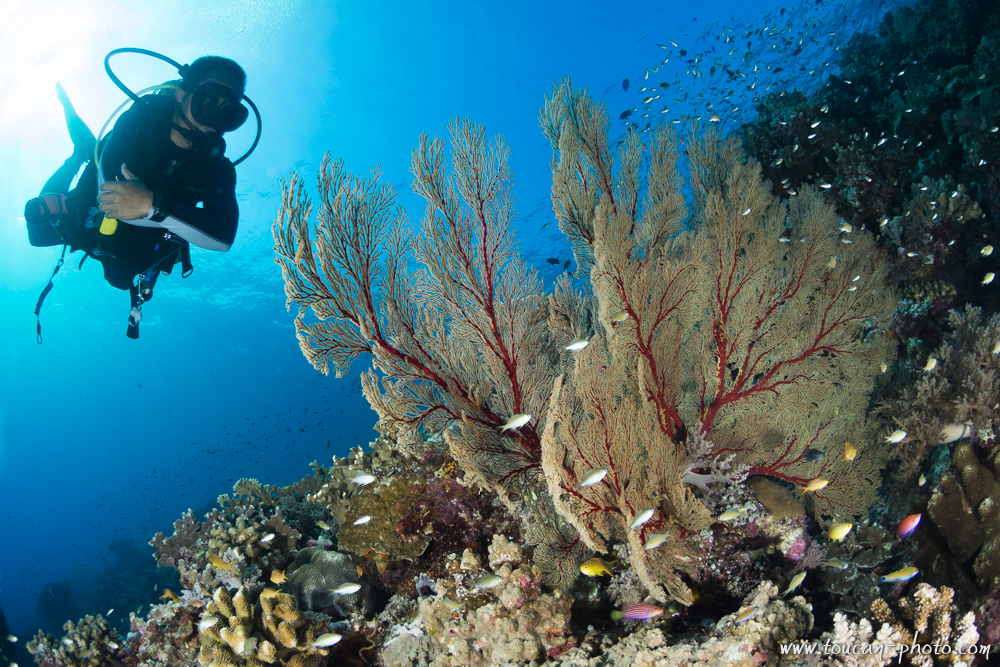 Subergorgia sp coral
Subergorgia sp coral
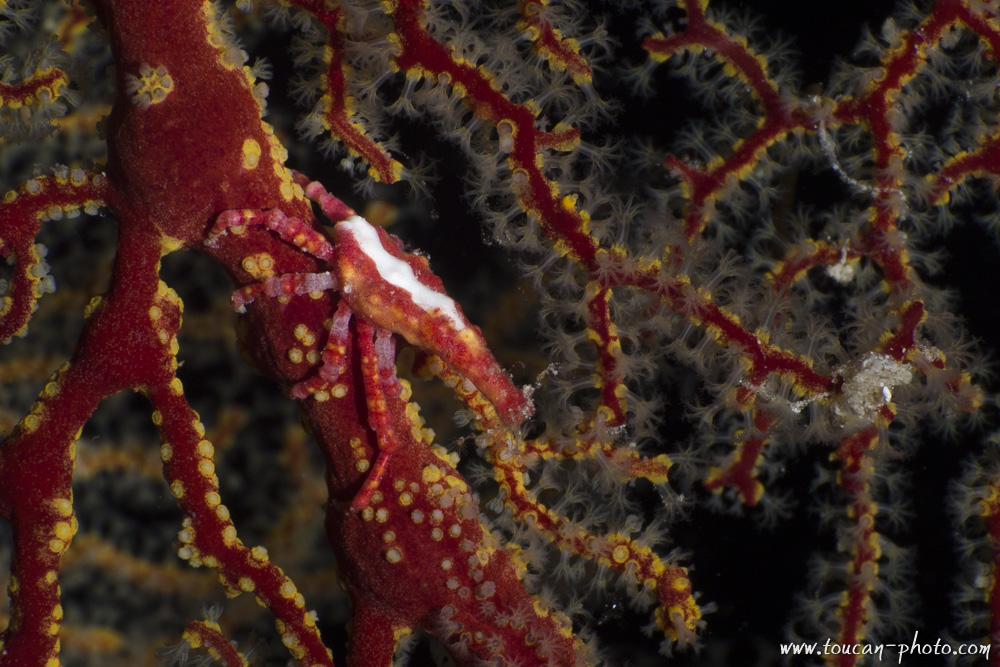 Depressed spider crab (Xenocarcinus depressus)
Depressed spider crab (Xenocarcinus depressus)
This small crab spider that measures no more than 15mm is housed in a gorgon . This night photograph shows the gorgonian polyps , coming out in favour of the darkness to gather nutrients carried by water.
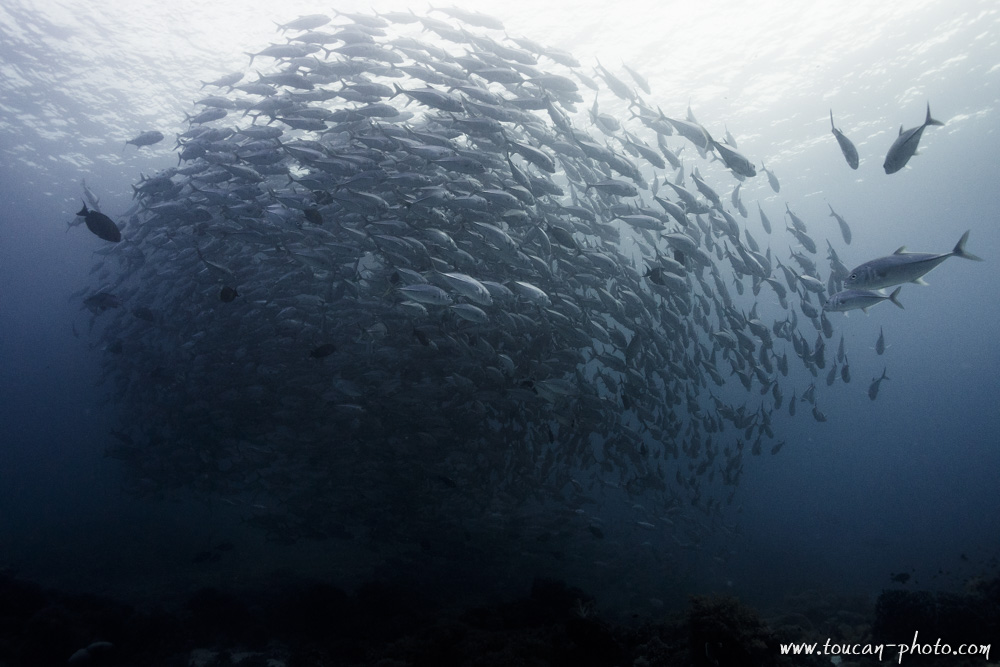 Schoof of Bigeye trevally (Caranx sexfasciatus)
Schoof of Bigeye trevally (Caranx sexfasciatus)
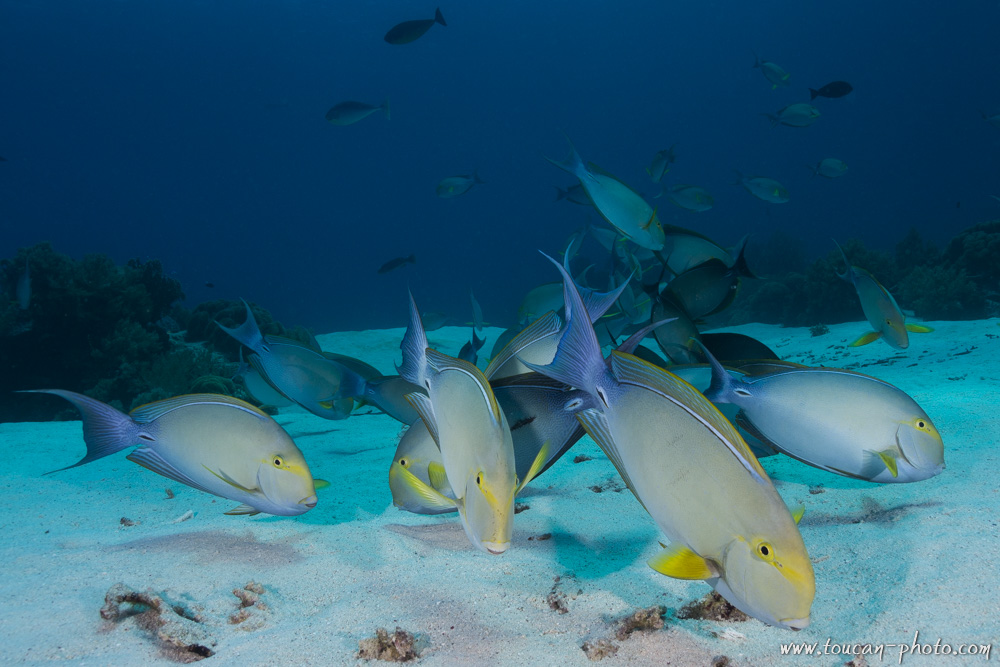 Yellowfin surgeonfish (Acanthurus xanthopterus)
Yellowfin surgeonfish (Acanthurus xanthopterus)
And now?
See more underwater pictures
To read more about the Marine Park of Tubbataha:
The Marine Park of Tubbataha on Wikipedia (EN)
The Marine Park of Tubbataha official website (EN)
Tubbataha on the UNESCO website (EN)